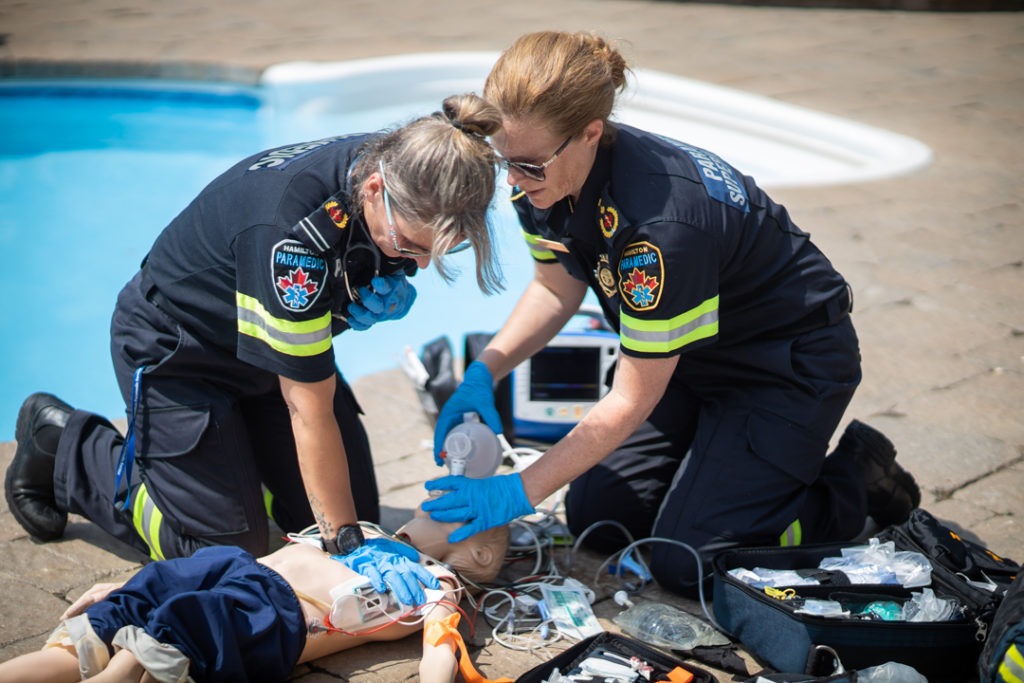
Water safety for kids
Drowning is a leading cause of injury-related death for Canadian children, and it often happens quickly and silently. Almost half of all child drownings occur in backyard swimming pools. It’s important to enjoy swimming safely, so here are some tips for drowning prevention, backyard swimming pools and life jacket fitting.
What to do if you suspect a child is drowning
Children can drown in as little as one inch of water. If you suspect someone is drowning (if they have stopped breathing or have trouble breathing), call 9-1-1 immediately and follow these steps:
- Take the child out of the water
- Place them on their back with their head tilted slightly back to open the airway
- Check if the child is breathing by placing your ear near their mouth and nose
- Remember, gasping for air is not considered breathing
- If they are not breathing, start CPR as soon as possible. Every parent should be very familiar with how to perform CPR.
Backyard pool safety
Make sure your backyard pool is a feature to enjoy, not a dangerous hazard for your family and friends. Our Dr. Karen Bailey, pediatric surgeon, shows some pool safety tips.
- All pools must be fully fenced with a self-closing, self-latching gate.
- Young kids and weak swimmers should wear life jackets or personal flotation devices in and around the water.
- Ensure there is adult supervision around the pool, even if the children can swim.
- Have some safety equipment accessible including a reaching pole or ring buoy.
- Always have a first aid kit handy.
- Have a phone nearby to call 9-1-1 in case of an emergency.
- Consider a safety net or removable mesh fence for added protection when the pool is not in use.
- Enroll kids in swimming classes when they become of age.
- Don’t leave toys laying around the pool that could entice kids to the edge.
- Don’t let kids dive in until parents have checked how deep the waters are.
Life jackets and personal flotation devices
It is highly recommended for everyone to wear a life jacket when boating, or doing water activities in open water as nine out of 10 people who drown in boating accidents are not wearing life jackets.
Young kids and weak swimmers should wear a life jacket or personal flotation device when near or swimming in water, including pools and at the beach.
When a child wears a life jacket in the water it not only keeps them floating but can turn them from face-down to face-up. This can help keep your child safe if they fall into the water.
A personal flotation device also keeps your child floating, however, it doesn’t turn them if they’re face-down. Please remember that water wings and blow-up toys are not considered personal flotation devices. They aren’t approved and therefore will not necessarily keep your child floating. Puddle jumpers are a popular swimming aid, however they’re also not approved so are best to be used under careful supervision.
If your child wears a life jacket, it’s important to ensure it fits properly. Here are some fitting tips with our Dr. Karen Bailey, pediatric surgeon.
Life jacket fitting tips:
- Ensure you have the correct size.
- Adult sizes are based on chest measurement and weight.
- Child sizes are based on weight.
- Check the label to make sure it’s been approved.
- Check the life jacket for damage and ensure the zipper still works.
- The fit should be snug so that it doesn’t ride up over your ears.
- Life jackets for kids should have the following features:
- A large collar
- An adjustable waist strap
- A strap that buckles between the legs
- Bright colours and reflective tape
- Each year test the life jacket not only to ensure it still fits, but to ensure it’s still effective
